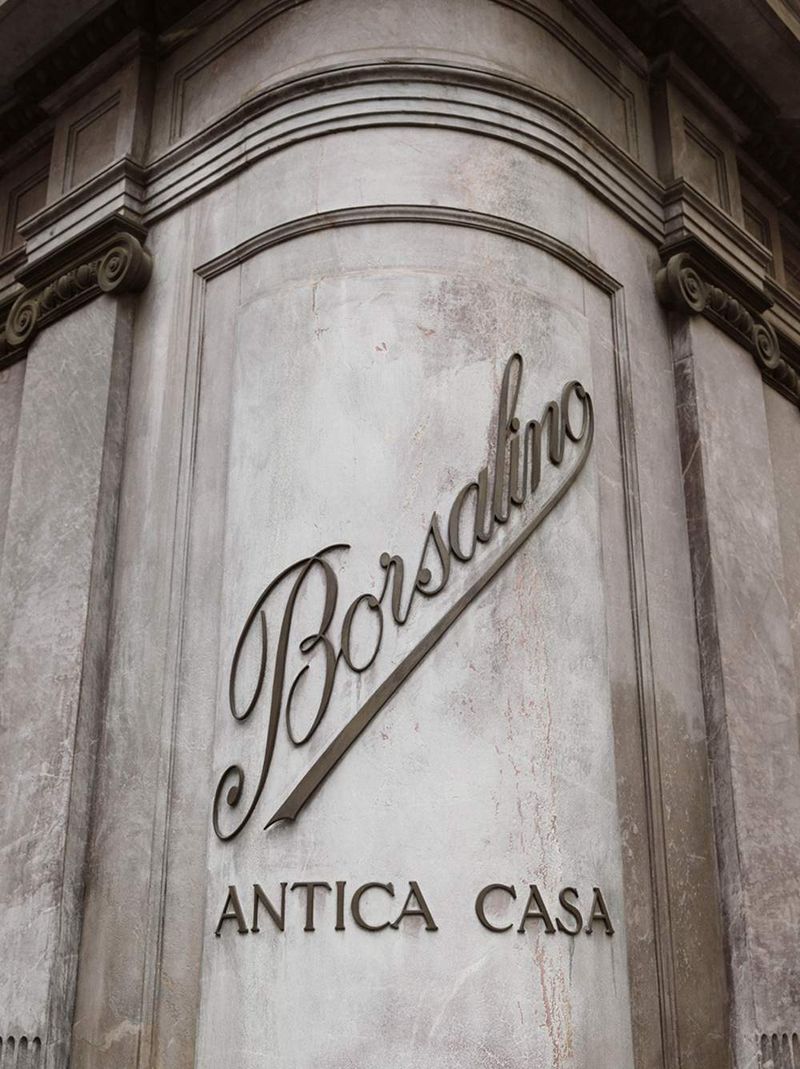THE JOURNAL
Film by Mr Jacopo Maria Cinti
We head to the home of the historic hatmaker to witness the 52-stage process that has barely changed in a century.
Borsalino’s headquarters lie on a nondescript stretch of road on the outskirts of Alessandria, a small town roughly equidistant from northern Italy’s manufacturing capitals of Milan, Genoa and Turin. This is the so-called industrial triangle, an area of lowlands and alluvial plains noted for its high density of car factories. When people talk about the romance and glamour of Italy, it’s safe to assume they’re referring to somewhere other than here. And yet, this is the home of Alfa Romeo, Vespa and Maserati. This flat, featureless landscape, far from the rolling hills of Tuscany or the hulking beauty of Rome, has nonetheless given birth to more than its fair share of Italian design icons.

The entrance of the Borsalino flagship store in Alessandria, Piedmont, Italy

A portrait of founder Mr Giuseppe Borsalino on display in the factory office
Borsalino is undoubtedly one of them. The name may no longer be universally familiar, but there was a time when this 160-year-old company was synonymous with fine gentlemen’s fedoras. At its peak, in the first half of the 20th century, Borsalino was crafting in excess of two million hats per year and employing 3,000 people, a fifth of Alessandria’s population at the time. It dominated the market to such an extent that the word “borsalino” even appeared in the Oxford English Dictionary as a noun used to describe “a man’s wide-brimmed felt hat”. It made it into the movies, too. If you’ve watched Casablanca, you’ll have seen Hollywood legend Mr Humphrey Bogart wearing a Borsalino fedora. If you’ve watched Borsalino, a 1970 gangster film starring Messrs Alain Delon and Jean-Paul Belmondo, which was named after the hat-maker at Mr Delon’s request, then you’ll have seen plenty of them.
The company was founded in 1857 by Mr Giuseppe Borsalino, a locally born hat-maker who honed his craft at Berteil in Paris before returning to his hometown to set up shop with his brother, Mr Lazzaro Borsalino. At first nothing more than a small workshop, Mr Borsalino’s company grew rapidly with the arrival of the second industrial revolution and a new breed of efficient, steam-driven machines from Manchester, England. Many of these machines are still in operation today at the company’s factory in Spinetta Marengo, where they process rabbit hair into sheets of felt, ready to be shaped into hats. These are just the opening steps in a 52-stage process that has barely changed in more than a century.

The brimming, one of the 52 steps of making a Borsalino hat
It’s not just a steadfast commitment to proven artisanal methods that has assured Borsalino’s longevity; it’s also a close working relationship with the town of Alessandria. Much of this can be attributed to Mr Teresio Borsalino, the son and successor of Mr Giuseppe Borsalino, who took control of the company on his father’s death in 1900 and presided over its development into a globally recognised brand. He was a shrewd businessman, doubling production in his first 10 years at the helm, but he also had a reputation as a philanthropist. He contributed to the town’s local infrastructure with sewage systems, aqueducts and hospitals, and introduced social projects such as after-school clubs and dormitories for employees who were commuting in from the countryside.
As the company grew, it became a more and more integral part of the local community. For many years, the pace of life in Alessandria was dictated by the factory siren that sounded the beginning and the end of the working day. Even now, with the factory relocated to the outskirts of town, the fates of Borsalino and the town remain firmly entwined. It’s not uncommon to meet locals who have worked at the company for decades, or who are second-, third- or even fourth-generation employees.
Some of these older employees will just about be able to recall a golden era for Borsalino, when a hat was as indispensable a part of the gentleman’s wardrobe as a jacket or a pair of shoes. The market for traditional men’s hats has shrunk significantly since then, and the company has experienced a natural decline in prominence. But while its output today may be a fraction of what it was at its peak in the 1940s, something that is both beautiful and beautifully made will never fully fall out of fashion. And, to those in the know, a Borsalino hat remains the epitome of classic elegance.

A flame is used to remove the extra hair from a Borsalino hat as part of the refining process

A fedora in the Borsalino flagship store